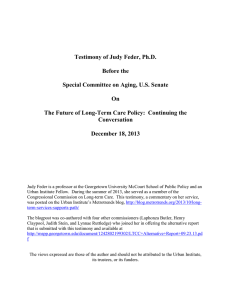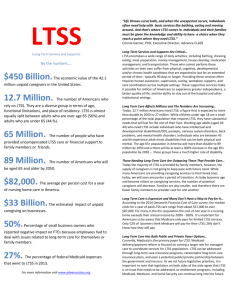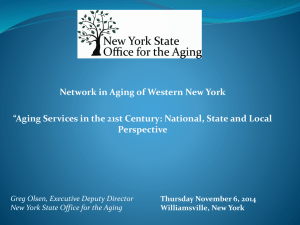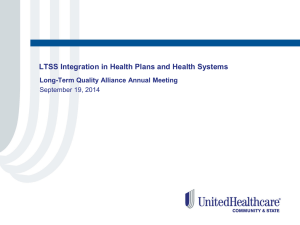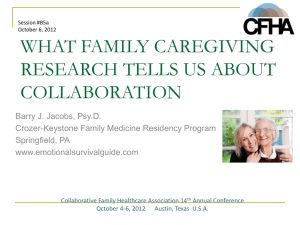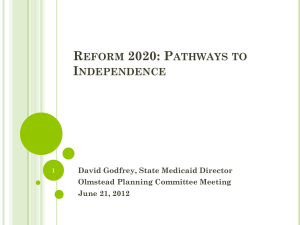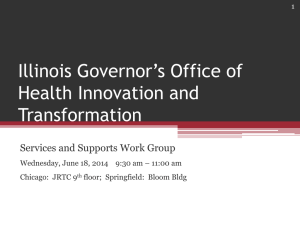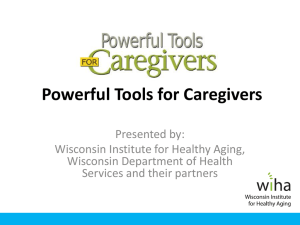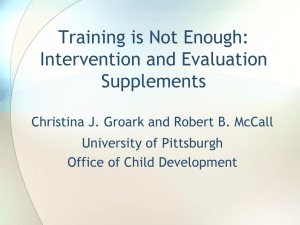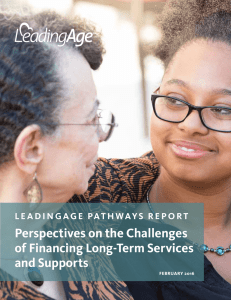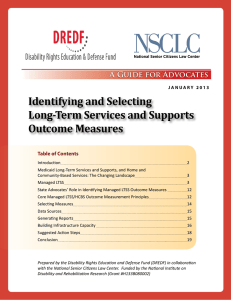AARP
advertisement
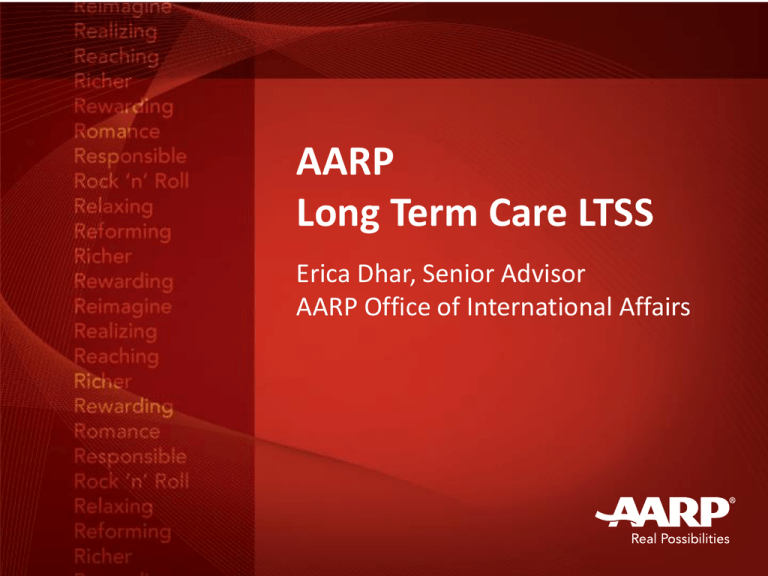
AARP Long Term Care LTSS Erica Dhar, Senior Advisor AARP Office of International Affairs AARP: Who Are We? www.aarp.org • • • • • Non-profit, non-partisan, social welfare organization 38 million members AARP.org AARP Services, Inc. AARP Foundation • AARP International • Age Friendly Cities • Best Employers • UN Advocacy 2 Footer (Arial 12) Number of Persons Aged 60 • 2012 810 million • 2050 2 billion • 2050 Older people will outnumber children under 14 3 Footer (Arial 12) Source: UN DESA, Population Ageing and Development Wall Chart, 2012 Valuing the Invaluable • • • • • 4 AARP Public Policy Institute Report 42.1 million family caregivers in the U.S 61.6 million provided care at some point in the year Caregiving reduces paid work for the typical caregiver by 41% 2004: Productivity losses to U.S. businesses related to informal caregiving was $33.6 billion 2009: Estimated economic value of caregiver unpaid contributions was $450 billion. Footer (Arial 12) How Much is $450 Billion? How Much is $450 Billion? Why Family Care Matters Today? • Caregivers are the backbone of long-term services and supports (LTSS) • Caregivers are key partners in health care • Family support is a key driver in remaining in one’s home and in the community • Caregiving is now more widespread and more difficult – a public issue • Complexity in the coordination and delivery of care • Poor care experiences are becoming increasingly shared concerns Family Caregivers Fill Big Gaps in Health Care & LTSS • Health care decisions, treatment, and outcome • Serve as “continuity connectors” and the “eyes and ears,” especially for persons with dementia • Assume a health management role in the home • PPI analysis of 20-year trends in family caregiving and LTSS findings • Family caregiving has been shown to delay or prevent the use of nursing home care The 2014 LTSS State Scorecard • www.longtermscorecard.org • Raise national level of performance • Assess state LTSS system performance along key dimensions • Additional goals: • Measure change in LTSS system performance over time • Add/improve indicators to better measure LTSS performance • Advocate for better measurement; needed for accountability • Effectively communicate both point-in-time performance and change over time The 2014 LTSS State Scorecard Major findings: • Highest ranked states: Minnesota, Washington, Oregon • Lowest ranked states: Mississippi, Alabama, W. Virginia Poverty and high rates of disability present challenges • Wide variation exists within dimensions and indicators • State Medicaid (primary source of public funding for LTSS) Support for family caregivers goes hand in hand with other dimensions of high performance • Better data is needed to assess state LTSS system performance • The cost of LTSS is unaffordable for middle-income families The 2014 LTSS State Scorecard • Key findings relating to select indicators and public policy to improve performance: • Medicaid safety net • LTSS “balancing” • Maximizing consumer choice of LTSS options • Consumer direction • Nursing home residents with low care needs • Pressure sores among nursing home residents • Preventing hospitalizations • Nurse delegation The 2014 LTSS State Scorecard • Conclusions: • The Affordable Care Act provides new incentives for states to improve their LTSS systems Care should be affordable and of the person’s choice • CGs are the foundation of American LTSS • As a nation, we are having fewer children and getting older. The 2014 LTSS State Scorecard • 5 Dimensions of a “high-performing” system: • 1) Affordability and access • 2) Choice of setting and provider • 3) Quality of life and quality of care maximize positive outcomes • 4) Support for family caregivers • 5) Effective transitions and organization of care AARP, CSCS, NYSCRC Report: Caregivers in Crisis – Why NY Must Act Now (Nov. ‘13) • Major policy recommendations: • Establish a community care navigator program • Provide adequate funding to non-Medicaid programs • Provide training and skill-building to caregivers • Review paid and unpaid family leave policies to assist working CGs and the businesses that employ them • Ensure access to competent legal assistance and legal protection to caregivers • Promote and increase affordable housing options • Support volunteer models • Promote changes in the work environment that encourage direct-care staff recruitment and retention Advocacy: Why now? • • • • Federal and state budgets Millions of caregivers in need of resources Improving state resources Advocacy cycle • Identify issue/problem Research cause & effect Plan goals, methods, timeline ACT Monitor & evaluate actions and results Advocacy (cont’d) • • • • • • Know the leaders Know the process Track the legislation Prioritize issues Create justification Raise awareness
